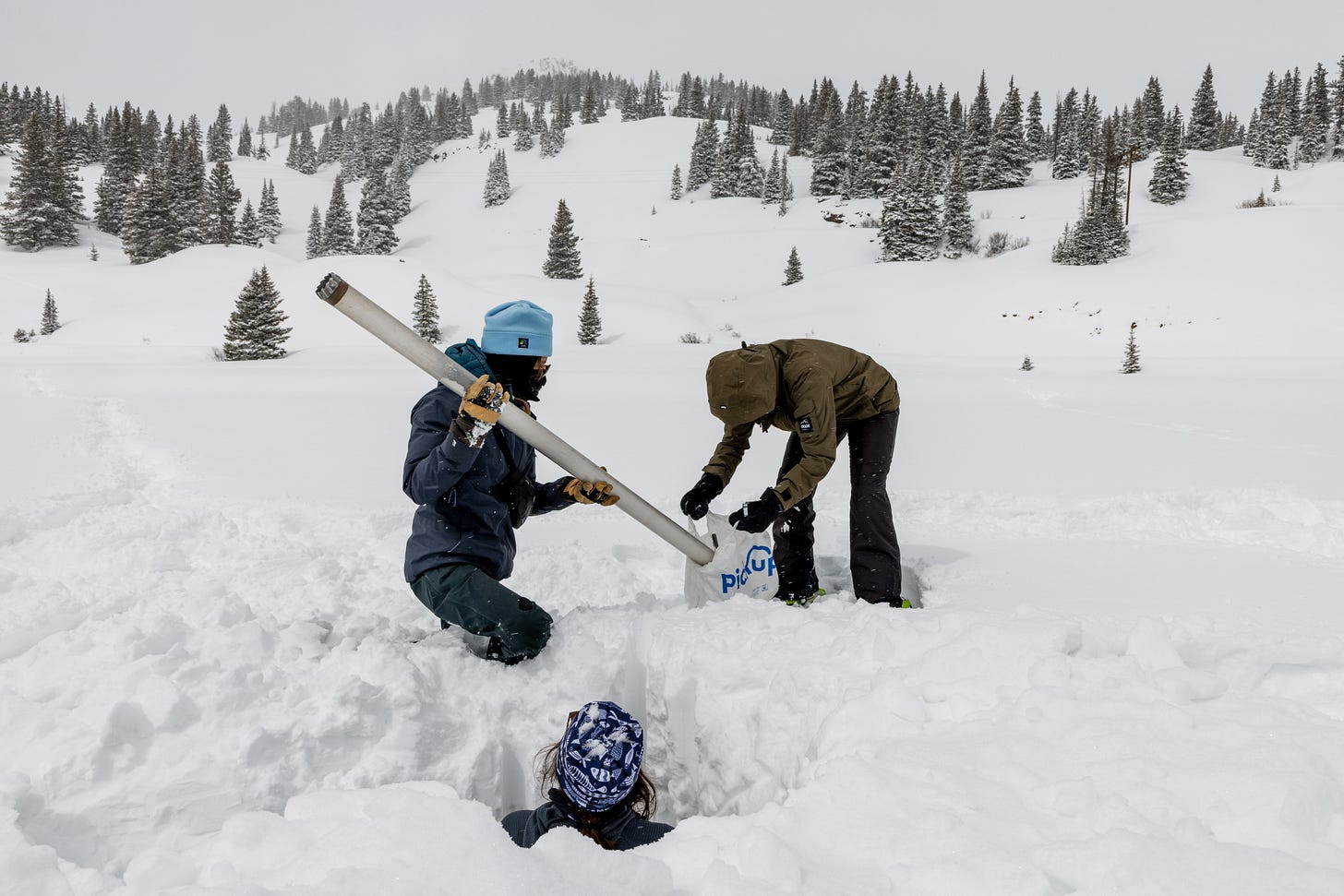Snow news roundup
6 stories on my radar

Here’s a quick rundown and roundup of some snow- and ice-related stories I’ve been reading lately:
🏔️ “Glacier meltdown risks food and water supply of 2 billion people, says UN.” Fiona Harvey, The Guardian, 3/20/25.
“Two-thirds of all irrigated agriculture in the world is likely to be affected in some way by receding glaciers and dwindling snowfall in mountain regions, driven by the climate crisis, according to a Unesco report,” Harvey writes. The new report highlights that 55-60% of global annual freshwater flows come from mountains, supplying some 2 billion people.

Below is a video summary of the report, which notes that the United Nations has declared 2025 as the International Year of Glaciers’ Preservation.
If you’re still thirsting for bad news about glaciers, also be sure to check out this February AP story from Seth Borenstein: “Climate change is shrinking glaciers faster than ever, with 7 trillion tons lost since 2000.” A recent global study concluded that “since 2000, glaciers have lost between 2% and 39% of their ice regionally and about 5% globally.”
❄️ From 'mashed potatoes' to 'white suede,' this ski instructor speaks the language of snow. Alex Hager, KUNC, 3/20/25.
Russ Scholl, a Breckenridge ski instructor, has created a Periodic Table of Snow that includes 133 phrases and words for different types of snow. A man after my own heart. Scholl sells the table on his website, but as Hager notes, “he seems just as excited to tell a stranger in the lodge about his periodic table over a bowl of chili as he is to make an online sale.” Some of the terms include cold smoke, diamond dust, salt on Formica, and crud.
🔥 ‘It’s bad’: How drought, lack of snowpack and federal cuts could spell wildfire disaster in NM. Patrick Lohmann, Source NM, 3/10/25.
The snowpack keeps a lid on wildfires, so the lack of snow in the Southwest this winter has many residents, myself included, worried about blazes breaking out this spring and summer. Compounding the problem are federal cutbacks that have shuttered two wildfire dispatch centers in New Mexico and led to layoffs of personnel who help fight fires.
I found the map below showing the above-normal potential for significant wildfires in June in New Mexico, Arizona, and the southern portions of Utah and Colorado, among other places.
🎬 Martin Scorsese To Produce Film About Alpine Meadows Avalanche. Ian Greenwood, Powder, 3/5/25.
In 1982, an avalanche struck California’s Alpine Meadows ski area, killing seven people. That tragic snow slide, which hit the base while the resort was closed, will be the subject of a new production by filmmaker Martin Scorsese, whose award-winning career includes such movies as Taxi Driver, Raging Bull, Goodfellas, and so many more.
The avalanche was the basis for a book by Jennifer Woodlief, A Wall of White: The True Story of Heroism and Survival in the Face of a Deadly Avalanche, and it was recounted in a documentary, Buried, by Steven Siig and Jared Drake. Below is a trailer for the 2022 film.
The new movie “will center on the perspective of Anna Conrad—the lone survivor of the avalanche—and those of the rescuers who scrambled to save the people buried in Alpine Meadows’ base area,” Greenwood writes. “After a five-day search, Conrad was found alive but suffered hypothermia, frostbite, and lost part of her right leg and left foot.”
🔎 At Hidden Tahoe Lab, Scientists Learn the Art of Measuring Snow. Carly Severn, KQED, 2/7/25.
I enjoyed this interesting feature about scientists receiving training in snow measurement at UC Berkeley’s Central Sierra Snow Lab, which has operated for nearly 80 years. In addition to maintaining snowpack records since its founding in 1946, the lab is a storehouse of data going back to 1878 when the Central Pacific Railroad was doing the work. The lab is home to “the longest such climatological records in the world when it comes to snow,” Severn writes. The training took place during a sunny, dry stretch when the snowpack was a little below average, but in 2023, the lab received 63 feet of snow, allowing staff to “walk directly into the third-floor windows.”
✈️ The science behind airplane deicing – a mechanical engineer explains how chemistry and physics make flying a more uplifting experience. Andrew Sommers, The Conversation, 2/28/25.
I recently explained the basics of deicing planes and why the process is so essential for keeping aircraft in the sky. This accessible post, from “a mechanical engineer who studies frost growth and water droplets on surfaces,” goes deeper into the science. I learned about the chemistry behind the various fluids, and that some aircraft have an “icephobic” coating.
(For more on the chilling threat of in-flight icing and the many measures used to prevent such accidents, see this piece from the Aircraft Owners and Pilots Association, which was fascinating even for this non-pilot.)



